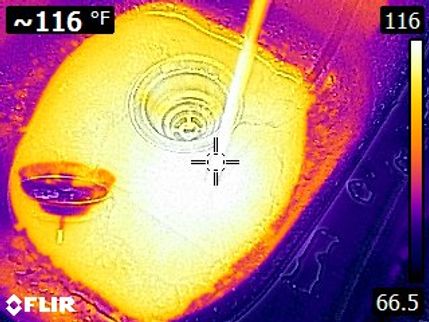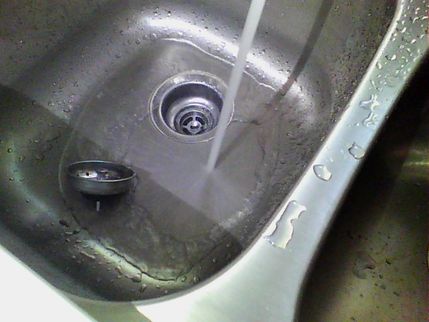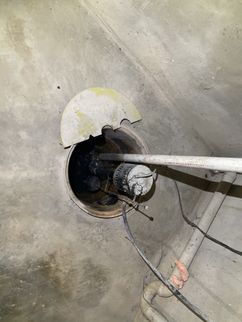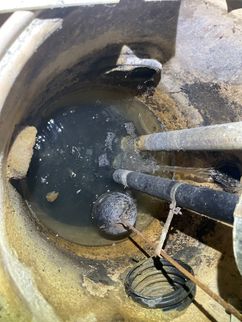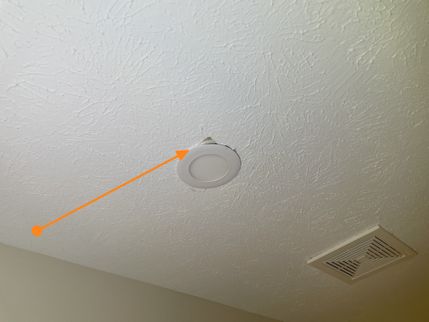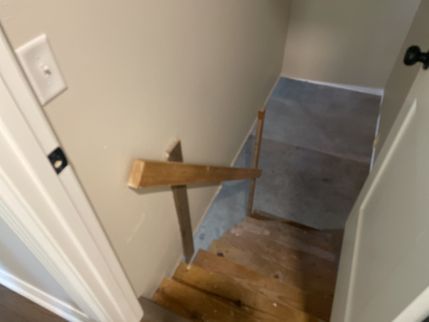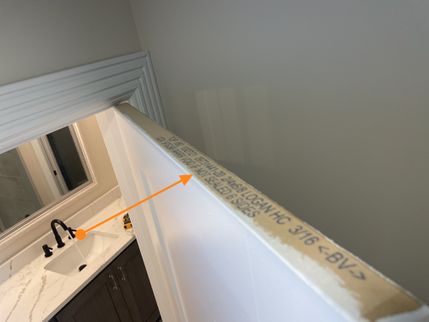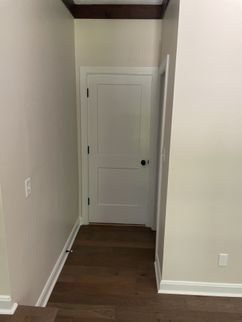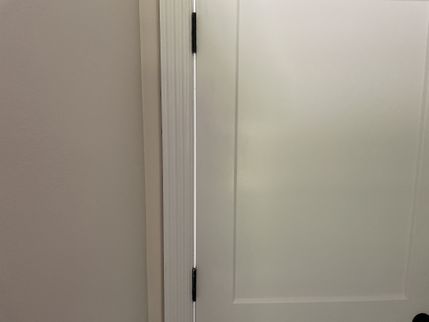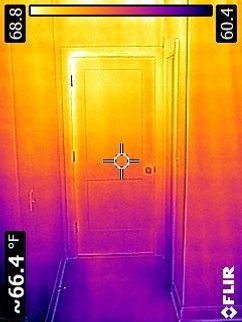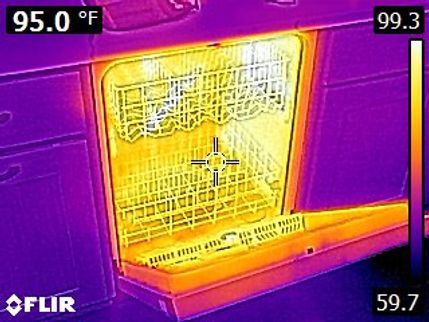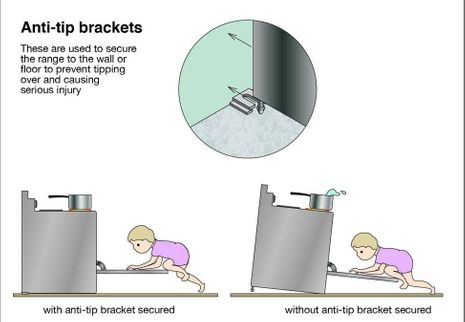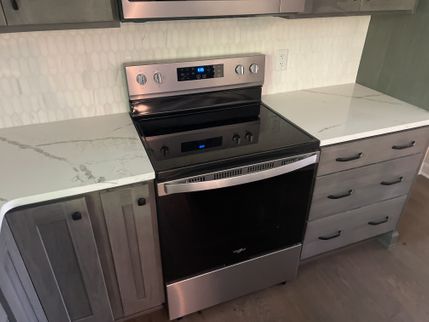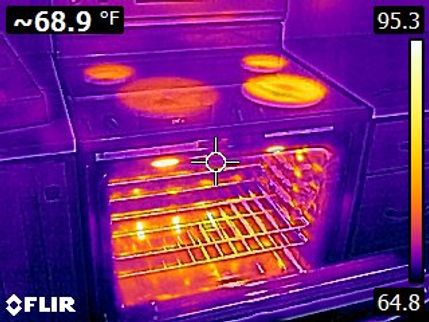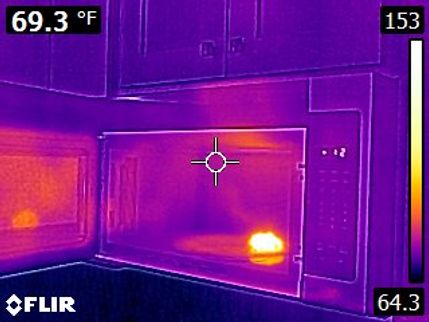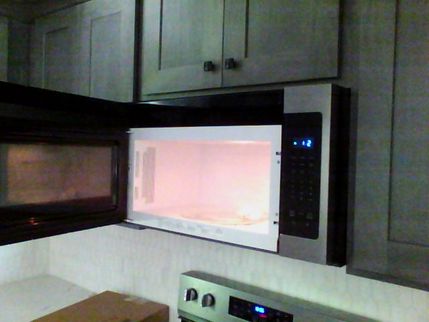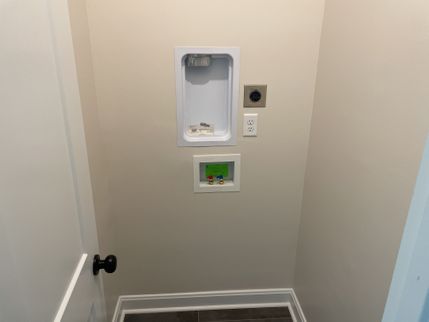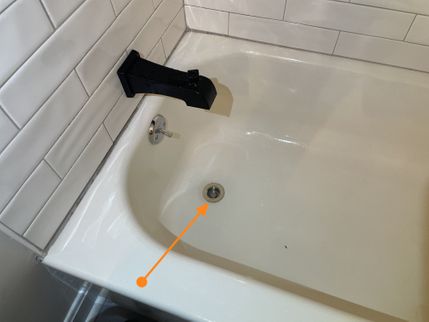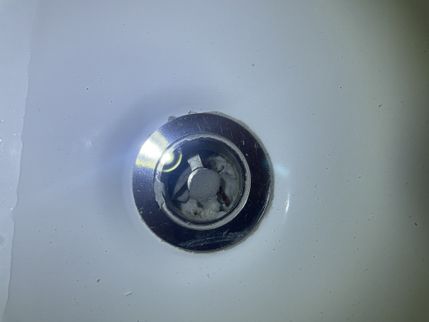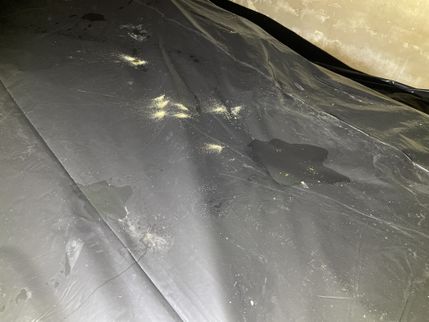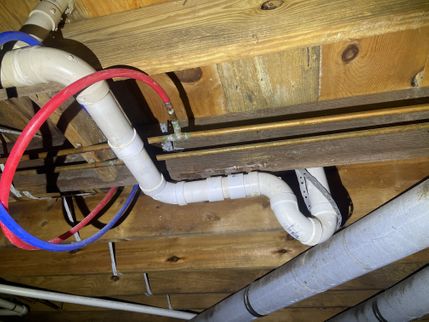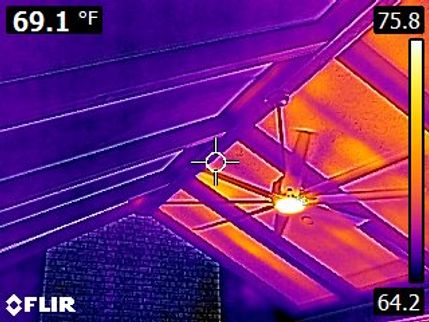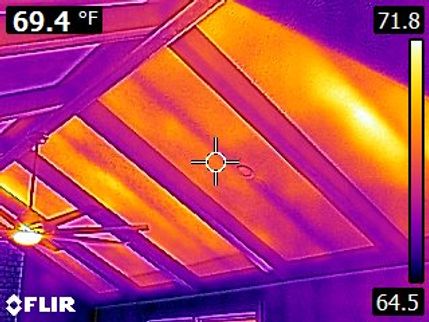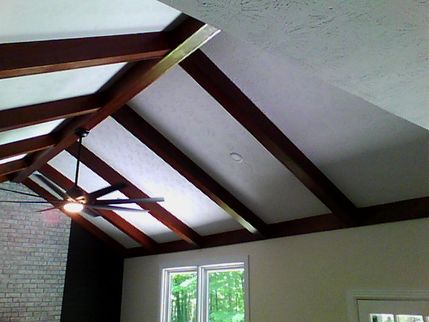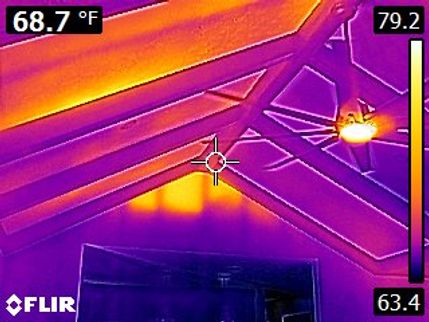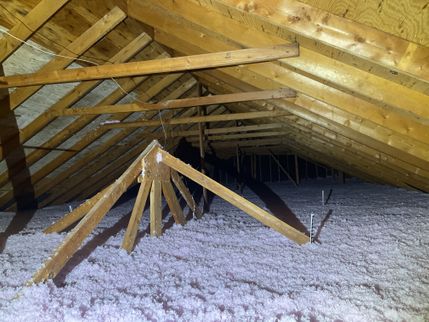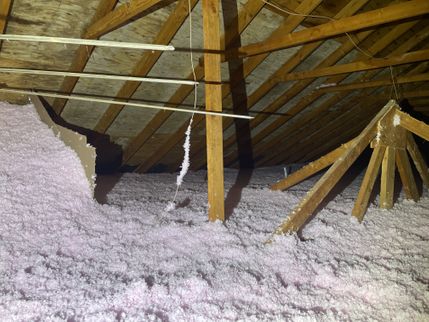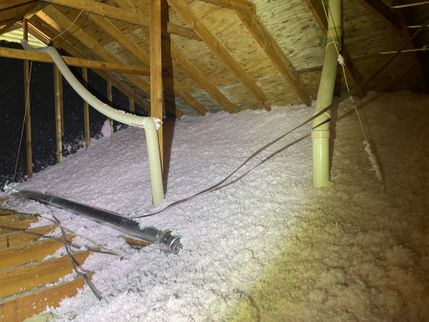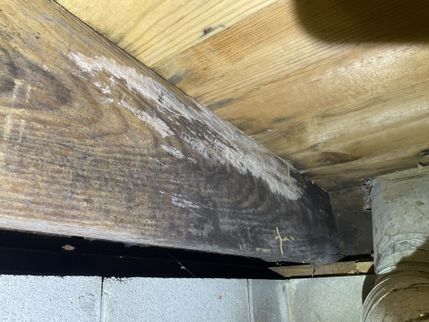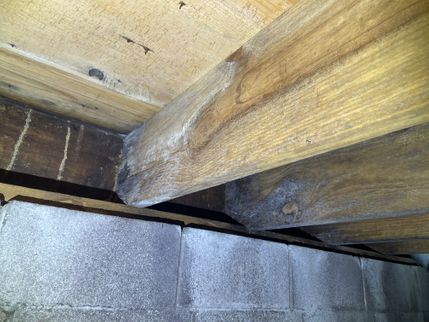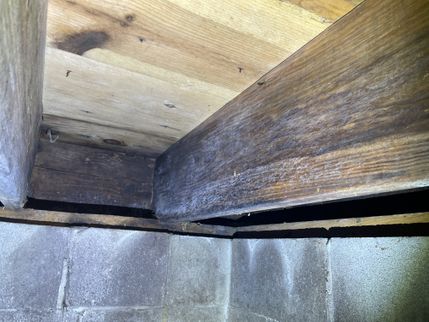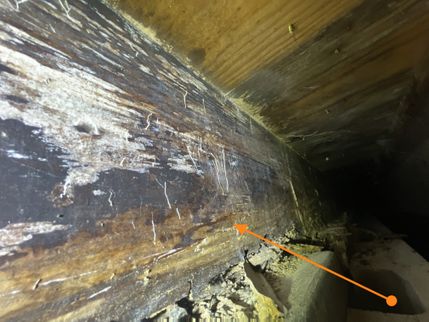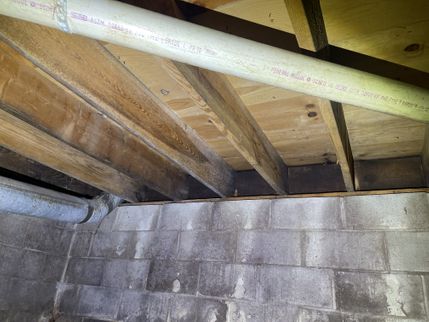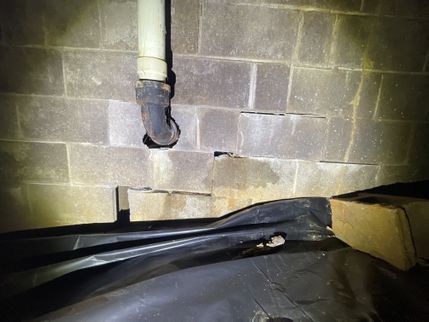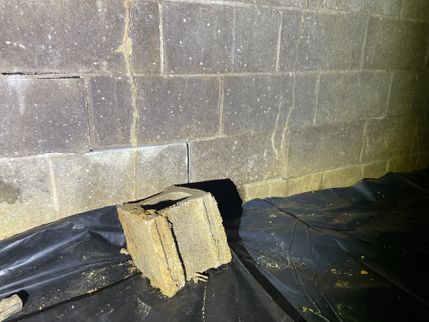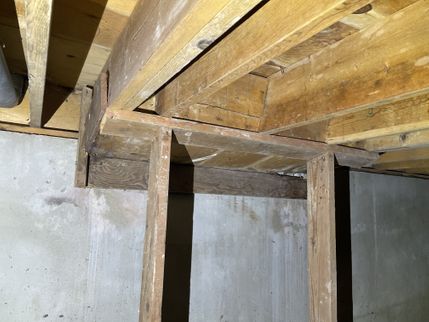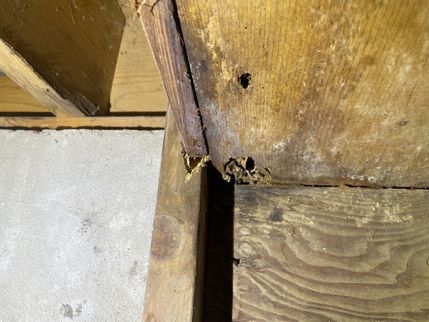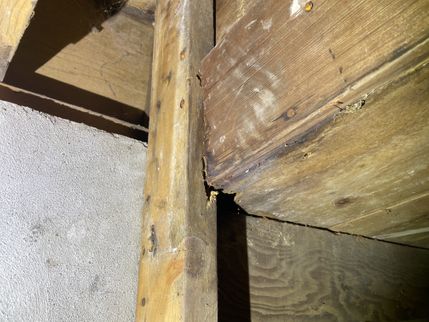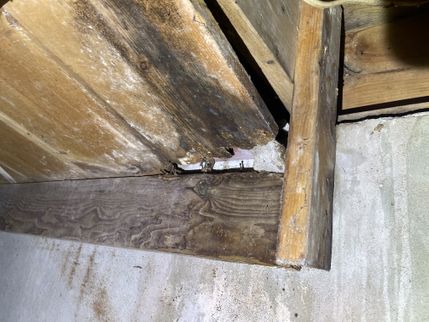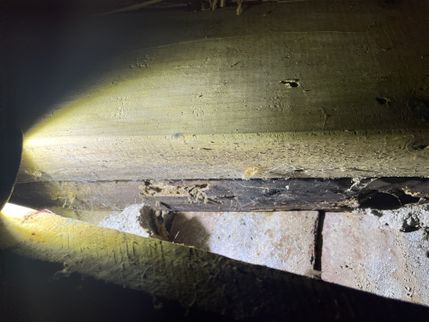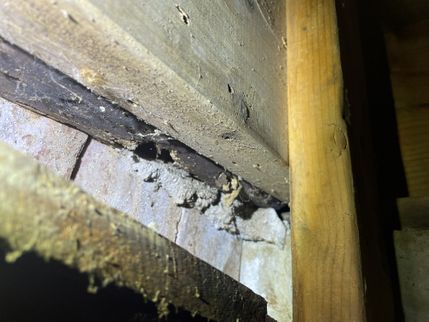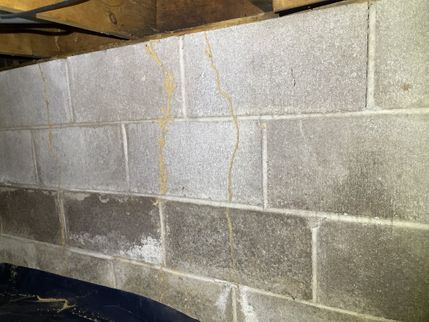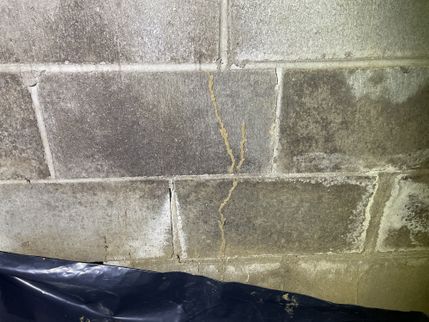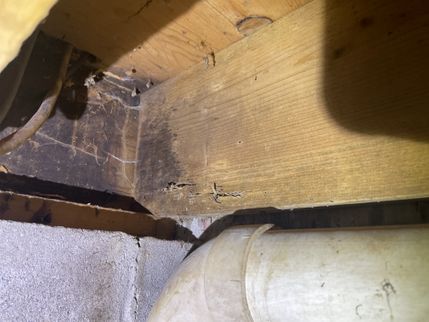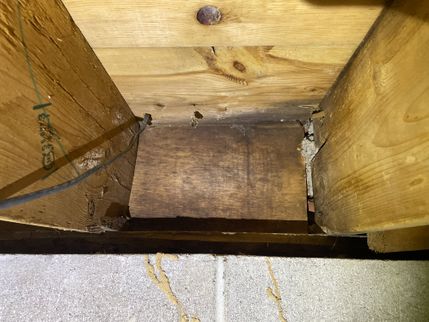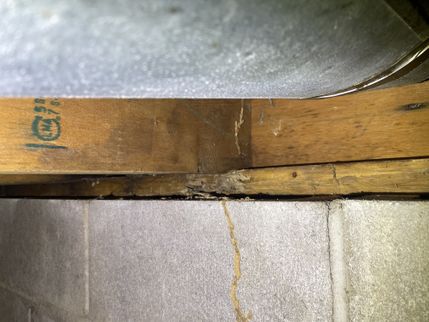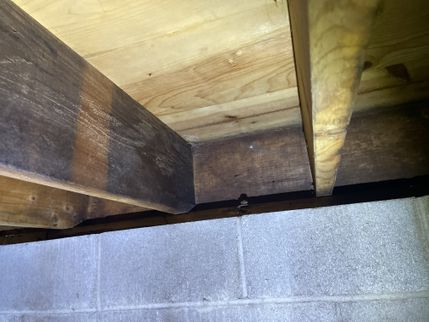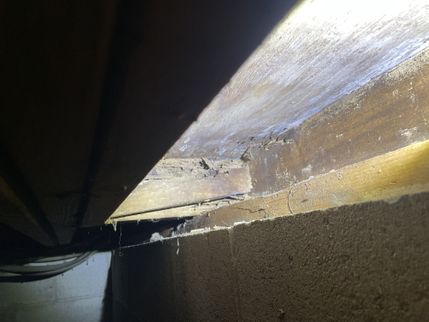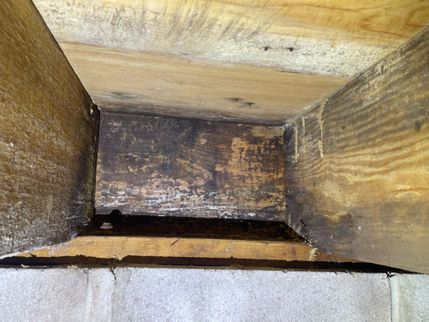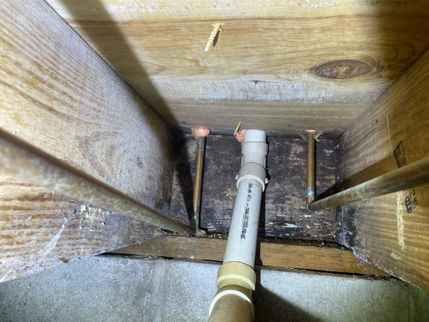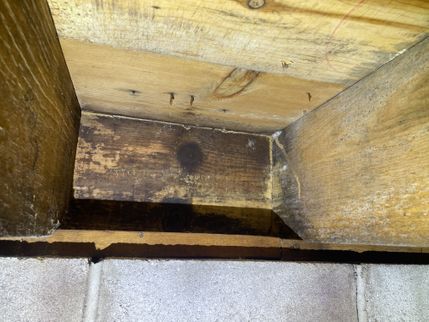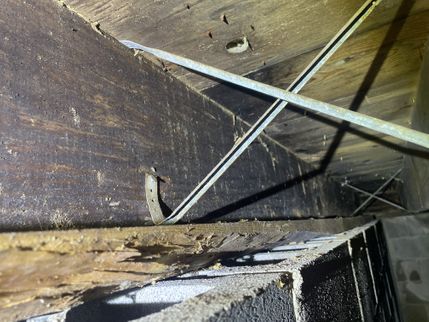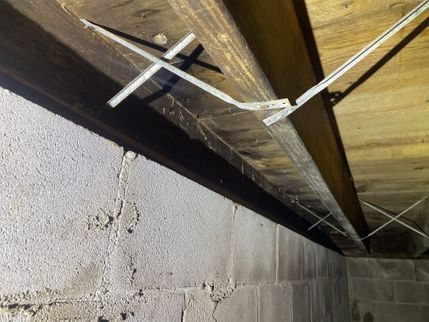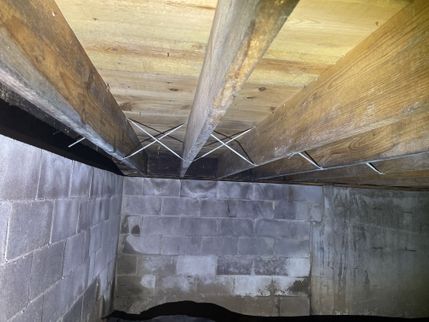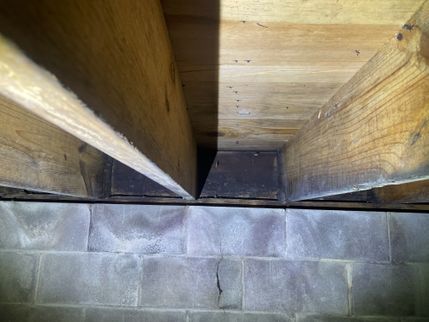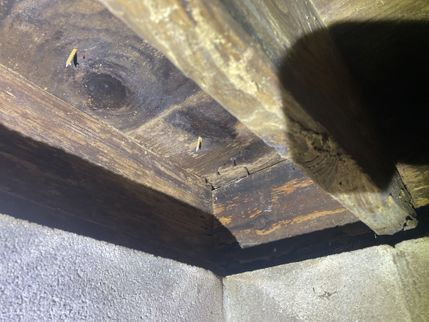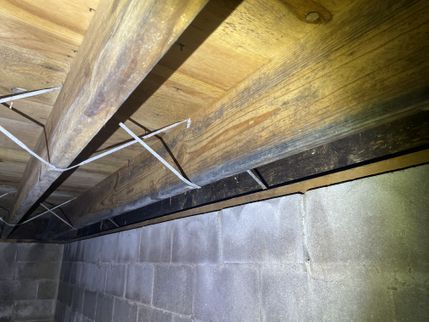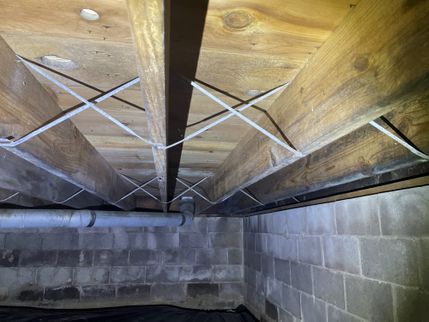The Scope and Purpose of a Home Inspection
Purchasing property involves risk
The purpose of a home inspection is to help reduce the risk associated with the purchase of a structure by providing a professional opinion about the overall condition of the structure. A home inspection is a limited visual inspection and it cannot eliminate this risk. Some homes present more risks than others. We cannot control this, but we try to help educate you about what we don’t know during the inspection process. This is more difficult to convey in a report and one of many reasons why we recommend that you attend the inspection.
A home inspection is not an insurance policy
This report does not substitute for or serve as a warranty or guarantee of any kind. Home warranties can be purchased separately from insuring firms that provide this service.
A home inspection is visual and not destructive
The descriptions and observations in this report are based on a visual inspection of the structure. We inspect the aspects of the structure that can be viewed without dismantling, damaging or disfiguring the structure and without moving furniture and interior furnishings. Areas that are concealed, hidden or inaccessible to view are not covered by this inspection. Some systems cannot be tested during this inspection as testing risks damaging the building. For example, overflow drains on bathtubs are generally not tested because if they were found to be leaking they could damage the finishes below. Our procedures involve non-invasive investigation and non-destructive testing which will limit the scope of the inspection.
This is not an inspection for code compliance
This inspection and report are not intended for city / local code compliance. During the construction process structures are inspected for code compliance by municipal inspectors. Framing is open at this time and conditions can be fully viewed. Framing is not open during inspections of finished homes, and this limits the inspection. All houses fall out of code compliance shortly after they are built, as the codes continually change. National codes are augmented at least every three years for all of the varying disciplines. Municipalities can choose to adopt and phase in sections of the codes on their own timetables. There are generally no requirements to bring older homes into compliance unless substantial renovation is being done.
This is just my opinion
Construction techniques and standards vary. There is no one way to build a house or install a system in a house. The observations in this report are the opinions of the home inspector. Other inspectors and contractors are likely to have some differing opinions. You are welcome to seek opinions from other professionals.
The scope of this inspection
This inspection will include the following systems: exterior, roof, structure, drainage, foundation, attic, interior, plumbing, electrical and heating. The evaluation will be based on limited observations that are primarily visual and non-invasive. This inspection and report are not intended to be technically exhaustive.
Your expectations
The overall goal of a home inspection is to help ensure that your expectations are appropriate with the house you are proposing to buy. To this end we assist with discovery by showing and documenting observations during the home inspection. This should not be mistaken for a technically exhaustive inspection designed to uncover every defect with a building. Such inspections are available but they are generally cost-prohibitive to most homebuyers.
Your participation is requested
Your presence is requested during this inspection. A written report will not substitute for all the possible information that can be conveyed verbally by a shared visual observation of the conditions of the property.
How to Read This Report
Getting the Information to You
This report is designed to deliver important and technical information in a way that is easy for anyone to access and understand. If you are in a hurry, you can take a quick look at our "Summary Page” and quickly get critical information for important decision making. However, we strongly recommend that you take the time to read the full Report, which includes digital photographs, captions, diagrams, descriptions, videos and hot links to additional information.
The best way to get the layers of information that are presented in this report is to read your report online, which will allow you to expand your learning about your house. You will notice some words or series of words highlighted in blue and underlined – clicking on these will provide you with a link to additional information.
This report can also be printed on paper or to a PDF document.
Chapters and Sections
This report is divided into chapters that parcel the home into logical inspection components. Each chapter is broken into sections that relate to a specific system or component of the home. You can navigate between chapters with the click of a button on the left side margin.
Most sections will contain some descriptive information done in black font. Observation narrative, done in colored boxes, will be included if a system or component is found to be significantly deficient in some way or if we wish to provide helpful additional information about the system or the scope of our inspection. If a system or component of the home was deemed to be in satisfactory or serviceable condition, there may be no narrative observation comments in that section and it may simply say “tested,” or “inspected.”
Observation Labels
All narrative observations are colored, numbered and labeled to help you find, refer to, and understand the severity of the observation. Observation colors and labels used in this report are:
- Safety:I visually observed a condition in the home that may pose a safety risk or hazardous condition. These conditions should be rectified before occupying the home.
- Health & Safety:I visually observed a condition in the home that may pose a safety risk or health hazardous condition. These items & conditions should be resolved/corrected before occupying the home.
- Major Concern:Repair items that may cost significant money to correct now or in the near future, or items that require immediate attention to prevent additional damage or eliminate safety hazards.
- Repair:Repair and maintenance items noted during inspection. Please note that some repair items can be expensive to correct such as re-finishing hardwood floors, but are considered simply repair items due to their cosmetic nature.
- Due Diligence:Items that may require further investigation to determine the severity and / or urgency of repair.
- Completed:Items that were tested/checked and found to be in working order. No further action is needed.
- Future Project:A repair that may be deferred for some time but should be on the radar for repair or replacement in the near future.
- Note:Refers to aside information and /or any comments elaborating on descriptions of systems in the home or limitations to the home inspection.
Who Repairs the Items Found in this Report
As I don't know the qualifications of the seller or the buyer to conduct repairs, I always recommend that you consult a qualified licensed professional in the appropriate trade to determine all needed repairs and best repair method, to estimate costs, and to perform all repairs deemed necessary. That's what I mean when I write "Repair as necessary", "Fix it" or ANY other terms implying the need for repair/replacement.
You need to decide for yourself if you or the seller's qualifications, experience and knowledge would allow the repair to be made without using a qualified licensed trade professional.
Summary Page
The Summary Page is designed as a bulleted overview of all the observations noted during inspection. This helpful overview is not a substitution for reading the entire inspection report. The entire report must be read to get a complete understanding of this inspection report as the Summary Page does not include photographs or photo captions.
Report Summary
Safety
- ES-1 ⚡ Electric Service:
The white conductors inside the electric panel at the 240 volt circuit breakers were not correctly identified as 'hot' or 'ungrounded' conductors - these should be painted in black or red ink for correct identification and improved safety. Have an electrician evaluate the panel and correct the situation as needed.
- I5-2 🔑 Interior:
The pull-down attic steps in the garage are old, wobbly, and do not reach the ground. These steps should be replaced for your safety. Climbing up and down these steps is a dangerous task, and if the steps were to fail due to their age, you could become seriously injured. I strongly recommend you replace these old steps with a modern metal set for your safety.
- I5-3 🔑 Interior:
The handrail leading into the basement has pulled out of the drywall. Because of the stress put on these railings they should never rely on just a drywall anchor to hold them in place. Have the railing repaired as needed, and make sure each bracket is secured into a wall stud behind the drywall.
- K-3 🔪 Kitchen:
The anti-tip bracket was not installed on the stove/range. This clip is designed to stop the unit from tipping forward when excess weight is placed on the oven door once its opened. It mounts to the wall behind the range and the back leg of the unit slides in the fork of the bracket to stop the range from tipping forward. Be sure to have the anti-tip bracket installed for your safety.
Health & Safety
- CS-1 🐌 Crawl Space:
What may be mold or mildew or some kind of fungal growth is present on some of the structural wood in the crawl space. It may be in other areas also. I don't know. The identification of the substances and characterization of a health hazard are beyond the scope of this home inspection.
Mold, mildew, fungus and other organisms commonly occur in areas that show evidence of, or have the potential for, leaking, moisture intrusion and/or inadequate ventilation. Any area or item exhibiting such conditions can be a health hazard to some people. Only lab testing can positively identify the growth or if will be harmful to you or your family.
My basic recommendation is: The moisture source needs to be controlled and the growth might need to be cleaned up (depending on what it is). There are specialists, such as industrial hygienists, who can help create an action plan for you to take care of the issue.
- RGT2-1 ☢ Radon Gas Testing:
The home was tested for Radon gas using a Sun Nuclear 1028 continuous monitoring system.
The overall average of pCi/l (pico Curies per Liter) was 12.6pCi/l.
The EPA recommends mitigation (removal system) for all homes with a level of 4.0pCi/l or more. You will want to reach out to an NRPP-certified mitigation contractor about having a system installed to lower the Radon numbers in the home.
Major Concerns
- G1-1 🌳 Grounds:
There is a large tree in the backyard that is leaning toward the house. The tree itself does look healthy, but if it were to fall on the house it would cause an extreme amount of damage. Have an arborist evaluate the tree and remove it as needed.
- SB-1 🏠 Structure and Basement:
The back foundation wall has separated where the waste line exits in the large crawlspace.
It’s possible this will need underpinning work from a foundation company to stabilize the movement and prevent things from getting worse. You'll want to have an evaluation performed by a professional foundation contractor to get a better idea to the scope of the repairs. Follow their advice and repair the cracked wall as needed.
- SB-2 🏠 Structure and Basement:
The framing around the front door looks to have water and termite damage. You’ll need to have this wood framing removed around the foundation wall to get a clear view of the situation to know the extent and what it will take to repair this.
Have a contractor who specializes in termite repair evaluate the situation and rebuild the framing as needed.
- SB-3 🏠 Structure and Basement:
There’s widespread damage across the back wall of both crawlspaces, and along the front wall of the larger crawlspace. This looks to be a combination of water and termite damage. Most of the shelter tubes that are climbing up the wall have not been scraped, so one has to assume this is a current infestation. Follow the advice of your termite inspector and have the home treated as needed.
You also will need to have a contractor familiar with termite repair evaluate the floor structure across both crawlspaces and rebuild/repair things as needed. There are many floor joists, sections of rim joists, and many feet of sill plate that will need to be repaired/replaced.
Repairs
- RCG-2 🏡 Roof, Chimney and Gutters:
The chimney crown is worn/cracked and needs to be rebuilt. The crown (technically known as a crown wash) is what caps off the top of the chimney body, and sheds the water from getting down into the chimney body. If the crown is not kept in good condition it can cause the bricks on the body of the chimney to fall apart from spalling (spalling is a type of damage that happens to masonry from freezing water).
Have a chimney sweep or masonry contractor (who is familiar with repairing chimneys) take a look at the chimney and repair as needed. Keep in mind these repairs can get expensive, so be sure and do this prior to the end of your inspection period. I've included a detail drawing for you to get a visual idea of what a proper crown wash looks like.
A well-built chimney crown should all have the following:
- The top should overhang the sides of the chimney a few inches (with the bottom undercut with a drip line). This prevents water from seeping back between the crown seam and the bricks around the top portion of the chimney.
- Crowns should be made of concrete, not mortar.
- The crown should not physically touch the flue tiles. A bond breaker should be used around the flue tiles before the crown is installed so when you use the fireplace the expansion of the flue tiles won't lift the crown and cause it to crack.
- All flue tiles should have caps installed to stop bulk water from getting down inside the flues.
- RCG-3 🏡 Roof, Chimney and Gutters:
The downspouts around the home need to have extensions added to them (not just splash blocks). They are discharging water near the home's foundation, which can cause moisture issues around the house (such as foundation failure & flooding). You want to get water away from the house as much as possible, but no less than 5 feet.
- RCG-4 🏡 Roof, Chimney and Gutters:
The gutters are clogged, full of debris/water, and not draining. You’ll need to have all of the guttering around the home cleaned out, re-pitched, and repaired as needed so the water will flow out and away from home as it should.
Note- Gutters and downspouts that stay in this condition can cause a myriad of problems from foundation settlement to leaking basements/crawlspaces. It is vital that you keep your gutters cleaned out, and free-flowing.
- G-1 🚘 Garage:
There is a crack in the brick wall above the garage door. This happens when the lintel sags a bit in the center of the span and allows the brick wall above it to shift and crack. It's common to see, and typically doesn't cause any problems beyond a small crack. You can either live with it and wait to see if things get worse, or contact a brick mason about repairing it (which will likely be a lintel replacement).
- HCFV1-4 🔥 Heating, Cooling, Fireplaces and Ventilation:
There is a puddle of water forming on top of the furnace when the air conditioner is running. I was not able to source the leak, but I assume it has something to do with the condensation of the air conditioning system. Have an HVAC contractor evaluate the situation and repair things as needed.
- HCFV1-5 🔥 Heating, Cooling, Fireplaces and Ventilation:
There is a supply run in the small crawlspace that has been disconnected at the boot. Have an HVAC contractor reconnect the duct work and seal it as needed.
- FSD1-2 ⛽ Fuel Storage and Distribution:
There are two small propane tanks sitting adjacent to the fireplace. I do not know why these are needed as there is natural gas run to the home. Have a plumber investigate the situation and run a gas line to your fireplace as needed.
- P-2 🚿 Plumbing:
The shut-off valves above the water heater are corroding and should be replaced before they have the opportunity to leak. This type of failure is known as dezincification, and it's a form of corrosion and weakening of brass in which zinc is dissolved out of the brass alloy.
I do not know of a repair for this other than putting in a replacement valve. Have a plumber take a look at the situation and replace the failing valves as needed.
- P-5 🚿 Plumbing:
The water heater temperature was set too low at the time of inspection - just 115 degrees F. The range of 120-125 degrees F is the generally recommended temperature. Adjust water heater temperature as needed. For best practice, set water temperature at the water heater to 130 degrees F and use a tempering valve to set water temp back to a safe 120 for domestic use. This high tank temperature will reduce risks of Legionella developing in the tank.
Note- You may have a failed heating element in this water heater causing the low temperatures. If adjusting the thermostat doesn't raise the temps have a plumber diagnose the problem and repair things as needed.
- I5-1 🔑 Interior:
The ceiling light in the master bathroom toilet closet was poorly installed. The drywall around this light is damaged. Have a contractor repair as needed.
- I5-4 🔑 Interior:
The interior doors were not painted along the top and bottom edge. It's printed on the doors that the "warranty is void if not sealed on all sides."
This is required to help moisture absorb evenly into the doors. If some edges are left raw, they will absorb more moisture than the adjacent painted areas which can cause the door to twist/warp out of place.
Have the doors painted as the manufacturer requires so you don't develop issues in the future.
- I5-5 🔑 Interior:
The door separating the house and garage is missing the weather stripping. Have this installed to stop the airflow between the two spaces.
- LF6-1 🥼 Laundry Facilities:
The clothes dryer is exhausting out up the side wall. This is not a desirable installation as it can be difficult to access the exhaust duct for cleaning and inspection. Dryer lint is flammable and a fire hazard when it accumulates. If the exhaust duct has not been cleaned and inspected in the last year, I recommend a routine servicing to ensure safe and reliable performance. When exhaust ducts pass through unconditioned spaces, such as attics, the ducts should be insulated.
- FB-1 🛁 Family Bathroom:
The drain at the hallway shower has gobs of thinset blocking the water from flowing. If this tub was used to clean out tools and trowels during installation of tile, you could have a blockage deeper down the drain line. Have a plumber investigate and repair the situation as needed.
Note: This house is reported to be serviced by a septic system. You should never place anything like construction cleanup materials in your septic as it could cause a blockage. Be sure you have your septic system inspected for potential issues.
- MB-1 🚻 Main Bathroom:
There is a leak in the drain line for the master shower. Have a plumber investigate and repair as needed.
- A2-2 🗼 Attic:
The back half of the vaulted ceiling is not as well insulated as the front half. You can see this discrepancy under thermal imaging, as the back slope of the ceiling is a much greater temperature than the front slope. It may be difficult to correct given the construction of the roofline, so you will want to have an insulation contractor who utilizes thermography evaluate the situation and design a repair as needed.
Due Diligences
- GC2-2 💬 General Comments:
The home has had extensive work performed on the inside. Obtain copies of the permits and inspections that were done during the construction process of all these different components. This can help reassure you the work was completed by professional tradesmen, and it can help resolve any questions/issues that may come up when you are ready to sell the home.
- GC2-3 💬 General Comments:
This home inspection is not a mold inspection of any kind. According to the EPA, mold testing/sampling is NOT needed the vast majority of the time. Here is a link to more info from the EPA on mold: EPA on mold testing.
The EPA has produced a document on mold in the home which you can download here: A Brief Guide to Mold, Moisture, and Your Home
Any mold in a house is a symptom of a moisture problem and is not the actual problem itself. If I see anything during your inspection, I will say something in this report. That is strictly a courtesy for you. If this topic concerns you, you can speak with a true mold specialist, such as an industrial hygienist, about performing a test/inspection on the home. I would be very suspicious and cautious of any "mold contractor" who has a financial interest in performing any mold testing and/or mitigation work for you.
- RCG-1 🏡 Roof, Chimney and Gutters:
The roofing material on this structure is a recently installed dimensional or architectural grade shingle. These are often rated as 30-40 year shingles.
In practice as a roof assembly, they tend to last about 25-30 years depending on the quality of the installation, the steepness of the roof, and the exposure. This installation appears neat and professional.
Inquire with the seller about any warranty information for this roof. Many professional roofing companies will offer limited workmanship warranties that may transfer over to you.
Please note that roofs are not just a shingle. They are an assembly, and require regular cleaning and maintenance to keep them performing reliably.
- ESDW-1 🧱 Exterior Siding, Doors and Windows:
The brick work has several spots that look to have been recently tuck pointed/repaired. Understand that cracks in brick can be an indication of foundation movement. If the root cause of the movement is not addressed, patching the brick work is only a temporary repair as it will most likely re-crack when the movement happens again.
You'll want to get the full history from the sellers about what repair work was done, why it was needed, and who did the work. Be sure to find out if there any warranty with it.
- ES-2 ⚡ Electric Service:
The electrical panel appears to be newly installed. You will want to check with the sellers about who performed this work, as there is likely a warranty that comes with the product.
- EDFW1-1 ⚡ Electric Distribution and Finish Wiring:
In accordance with home inspection industry standards, I do not test smoke detectors as simply pressing the button doesn't give you any real data on how well the unit will work in a real fire. However, they are an important safety feature that must not be overlooked, and it is important to make sure that there are functional detectors installed at all required locations prior to occupying the premises. Unless the smoke detectors are newly installed I strongly encourage you to install new ones throughout the home when you move in. You can buy a 3-pack for around $30 on Amazon. Link to Smoke Detectors
- EDFW1-2 ⚡ Electric Distribution and Finish Wiring:
Carbon monoxide (CO) is a colorless, odorless, and tasteless gas that is poisonous to humans. It is known as the “silent killer” because humans cannot tell when they are around it, but it can be very dangerous and deadly if the levels get high enough.
The carbon monoxide detector is a safety device that can alert homeowners of a CO leak and help them escape a potentially life-threatening situation, like carbon monoxide poisoning.
What does a carbon monoxide detector do?
Carbon monoxide alarms detect the poisonous gas and provide early warning. In the event of a carbon monoxide leak, it is critical that you get to fresh air as soon as possible. Every second counts, and a detector can provide you and your family the advanced warning necessary to escape your home during an emergency.
What are the main sources of carbon monoxide leaks?
Carbon monoxide can be produced by any fuel-burning device. Three main sources are your home’s furnace, dryer vent in a drying machine, and fireplace or chimney. It is important to have these sources regularly serviced and cleaned by a professional to help prevent a CO leak that could lead to carbon monoxide poisoning.
Because of the seriousness of carbon monoxide risk, I encourage you to replace or install new carbon monoxide detectors in the recommended areas.
You should not leave old or currently installed carbon monoxide detectors in place. Most manufacturers list their life expectancy at about five years, and it's simply not worth the risk of leaving an old or pre-existing carbon monoxide detector in place.
There are several different types of CO detectors available. Some are hardwired like this one: Hardwired CO Monitor and some plug into a receptacle for easy installation like this one; Wall Mount CO Monitor
You can also get some units that will alert you of carbon monoxide at a much lower level then some of the cheaper models. While these more sensitive units do cost more, they will alert you to a potential issue much sooner. Low Level CO Monitor.
- HCFV1-1 🔥 Heating, Cooling, Fireplaces and Ventilation:
If you are getting 'home warranty coverage' (either buying one or the seller is providing one) it is vital you have their company's 'approved' contractor perform an inspection and service the HVAC system before they place the unit under coverage.
This will help prevent the warranty company from claiming a problem down the road was a pre-existing condition (which I'm told they are known for doing). Having a service letter from the same contractor makes it very difficult to have a claim denied when a problem arises.
- HCFV1-2 🔥 Heating, Cooling, Fireplaces and Ventilation:
The HVAC system is new. This equipment typically carries a lengthy warranty (sometimes up to 10 years) so you’ll want to find out who installed the system and see about having the warranty transferred over into your name.
- P-3 🚿 Plumbing:
The house is reported to have a septic system. I don't know if it does or not. Septic systems are excluded from the visual home inspection as I don't possess the necessary equipment (pump truck) to properly empty the tank and inspect the system. I recommend that you have the septic system fully inspected by a qualified septic system technician, to include emptying the tank to make certain things are in good working condition.
I also recommend that you consult with the county health department to see what information they have on the septic system, as the health department regulates and oversees local septic systems.
Septic systems can be very expensive to work on if something fails, please be sure and have this checked before you close on the home for your protection. For more information on septic systems on the internet see: http://cfpub.epa.gov/owm/septic/home.cfm
Completed Items
- K-1 🔪 Kitchen:
The dishwasher was run through a basic wash cycle. Everything seemed to work as it should. This was a basic function test and not a test of every cycle.
- K-2 🔪 Kitchen:
The range/oven was run through a basic function test. Everything seemed to work as it should. This was a basic function test and not a test of every cycle.
- K-4 🔪 Kitchen:
The microwave was tested by placing a cold wet rag in the unit and heating it for 15 seconds. The attached thermal imagine shows a hot wet towel after the cycle. Everything seemed to work as it should. This was a basic function test and not an exhaustive test of every button or function.
Future Projects
- ESDW-2 🧱 Exterior Siding, Doors and Windows:
The metal basement windows are rusting and showing their age around the frames.
Make sure you keep the mulch/dirt a few inches below the metal, as not doing so will speed up the deterioration process. Keep in mind that these windows will likely need to be replaced in the near future.
Note: If lowering the grade around the window is not an easy task, you can have window wells installed to help keep the soil off of the metal and slow down the deterioration.
- P-4 🚿 Plumbing:
The water heater is old- about 17 yrs. The NAHB (National Association of Home Builders) case study says the average life expectancy of a gas or electric water heater is "about 10 years." Because of the age of the unit, you'll want to have it replaced sooner rather than later.
Lots of water heaters last longer than 10 years, but flooding and failure is a risk you take the longer you leave it in place. The last thing you want is to come home to a failed tank on your water heater that has flooded your home. You can get the NAHB guide here: http://abihomeservices.com/download/NAHB-Lifetimes.pdf
Notes
- GC2-1 💬 General Comments:
This house was vacant / unoccupied at the time of inspection. Vacant and unoccupied houses present unique challenges for home inspection, especially the piping and wiring systems which have not be subject to regular use prior to the inspection. While these systems can be tested during inspection, this one-time test is different than regular use and it is difficult to know how these systems will respond to regular use after the inspection. For example, septic systems may initially function and then fail under regular daily use. Plumbing traps may operate with no signs of leaks and then let go when being actively used for a few days. Shower pans may only leak when someone is standing in the shower and taking a shower. Seals for plumbing fixtures can dry up and leak when not is use. Sewer lines with roots may allow water flow, but then fail when waste and tissue are flushed; it can take a few days for that to backup. Please understand we are trying our best to look for clues of past or existing problems to paint a realistic best-guess as to the reliability of these systems during inspection.
- HCFV1-3 🔥 Heating, Cooling, Fireplaces and Ventilation:
Understand that the primary function of the air filter is to protect the equipment--not your lungs. If a filter is too restrictive, the high static pressure may lead to a number of problems including burning out the fan motor or run capacitor, damage to the heat exchanger, poor efficiency, higher consumption of energy, etc.
The same can happen when you have no filter, an improperly sized/ fitting one, or one that is the correct size but is one in which the filter rack allows the filter to flop around, causing bypass of the filter media.
Aside from the adverse affects to a furnace, it will lead to clogging an attached evaporator coil, which inhibits airflow thus hindering performance. This often leads to overcharging and other silly attempts to "fix" the problem when the house doesn't cool or heat properly.
Keeping a clean, well fit filter is important to the health of your HVAC system. Your filter is located at the furnace. Be sure and change it every 30-60 days (or as needed).
- FSD1-1 ⛽ Fuel Storage and Distribution:
The gas meter is located on the front of the house. In most areas, the homeowner is required to paint the exposed pipe to prevent it from rusting. You'll want to check with the gas company to see what your responsibilities are as the homeowner in terms of maintenance with the exposed gas pipes.
- P-1 🚿 Plumbing:
The main water shut-off is located along the front wall of the basement. This line has leaked in the past, as you can see the staining running down the basement wall. Keep an eye on the area for future leaks and seal the penetration as needed.
- AP1-1 💧 Additional Plumbing:
The sump pump did function when tested. This is something you will want to test once a month. If there is no water in the crock, you can pour a bucket of water in the hole to raise the water level. The pump is triggered by the float switch hanging off the side of it. To trigger the unit to come on, simply lift the float vertically, or keep adding water to the pit until it turns on.
You'll want to also consider adding a water powered backup system. If the power were ever to go out, the back-up system will empty the basin, and may prevent your basement from flooding during hard rain. These can be found for sale here.
Note: This pump does look older, and should be replaced before it has a chance to fail on you. We have no way of knowing how old this unit is or how many minutes of run time it has experienced. As is the case with any piece of equipment with a motor, its lifespan is not indefinite. The last thing that you want to experience is a flooded basement because you left an old sump pump in place too long.
- A2-1 🗼 Attic:
The attic has about 16" of blown-in insulation installed. This is great for energy efficiency, but does prevent me from crawling/wading through it to fully inspect the attic. I would have to move a pile of insulation out of the way every step and that would ruin your nice "blanket" of insulation. I was not able to see/inspect the attic framing or ceiling joists in the attic because of this.
The Complete Inspection Report
💬 General Comments
Building Characteristics, Conditions and Limitations
Type of Building : Residential Single Family (1 story)
Approximate Square Footage: 2000
The approximate square footage listed here is listed as a courtesy and is based off of public records and disclosure. An evaluation of square footage of the buildings and property lines is beyond the scope of this inspection.
Approximate Age of Structure: 1995
Attending the Inspection: Vacant (inspector only)
Occupancy: Unoccupied
Animals Present: No
Weather during the inspection: Clear
Approximate temperature during the inspection: Over 70[F]
Ground/Soil surface conditions: Dry
Mold Testing: Mold Test NOT Performed:
The home has had extensive work performed on the inside. Obtain copies of the permits and inspections that were done during the construction process of all these different components. This can help reassure you the work was completed by professional tradesmen, and it can help resolve any questions/issues that may come up when you are ready to sell the home.
This home inspection is not a mold inspection of any kind. According to the EPA, mold testing/sampling is NOT needed the vast majority of the time. Here is a link to more info from the EPA on mold: EPA on mold testing.
The EPA has produced a document on mold in the home which you can download here: A Brief Guide to Mold, Moisture, and Your Home
Any mold in a house is a symptom of a moisture problem and is not the actual problem itself. If I see anything during your inspection, I will say something in this report. That is strictly a courtesy for you. If this topic concerns you, you can speak with a true mold specialist, such as an industrial hygienist, about performing a test/inspection on the home. I would be very suspicious and cautious of any "mold contractor" who has a financial interest in performing any mold testing and/or mitigation work for you.
This house was vacant / unoccupied at the time of inspection. Vacant and unoccupied houses present unique challenges for home inspection, especially the piping and wiring systems which have not be subject to regular use prior to the inspection. While these systems can be tested during inspection, this one-time test is different than regular use and it is difficult to know how these systems will respond to regular use after the inspection. For example, septic systems may initially function and then fail under regular daily use. Plumbing traps may operate with no signs of leaks and then let go when being actively used for a few days. Shower pans may only leak when someone is standing in the shower and taking a shower. Seals for plumbing fixtures can dry up and leak when not is use. Sewer lines with roots may allow water flow, but then fail when waste and tissue are flushed; it can take a few days for that to backup. Please understand we are trying our best to look for clues of past or existing problems to paint a realistic best-guess as to the reliability of these systems during inspection.
🌳 Grounds
🏡 Roof, Chimney and Gutters
Roof Materials
The roofing material on this structure is a recently installed dimensional or architectural grade shingle. These are often rated as 30-40 year shingles.
In practice as a roof assembly, they tend to last about 25-30 years depending on the quality of the installation, the steepness of the roof, and the exposure. This installation appears neat and professional.
Inquire with the seller about any warranty information for this roof. Many professional roofing companies will offer limited workmanship warranties that may transfer over to you.
Please note that roofs are not just a shingle. They are an assembly, and require regular cleaning and maintenance to keep them performing reliably.
Chimneys
Chimney Material: Masonry
The chimney crown is worn/cracked and needs to be rebuilt. The crown (technically known as a crown wash) is what caps off the top of the chimney body, and sheds the water from getting down into the chimney body. If the crown is not kept in good condition it can cause the bricks on the body of the chimney to fall apart from spalling (spalling is a type of damage that happens to masonry from freezing water).
Have a chimney sweep or masonry contractor (who is familiar with repairing chimneys) take a look at the chimney and repair as needed. Keep in mind these repairs can get expensive, so be sure and do this prior to the end of your inspection period. I've included a detail drawing for you to get a visual idea of what a proper crown wash looks like.
A well-built chimney crown should all have the following:
- The top should overhang the sides of the chimney a few inches (with the bottom undercut with a drip line). This prevents water from seeping back between the crown seam and the bricks around the top portion of the chimney.
- Crowns should be made of concrete, not mortar.
- The crown should not physically touch the flue tiles. A bond breaker should be used around the flue tiles before the crown is installed so when you use the fireplace the expansion of the flue tiles won't lift the crown and cause it to crack.
- All flue tiles should have caps installed to stop bulk water from getting down inside the flues.
Gutters and Downspouts
Extend Downspouts
The downspouts around the home need to have extensions added to them (not just splash blocks). They are discharging water near the home's foundation, which can cause moisture issues around the house (such as foundation failure & flooding). You want to get water away from the house as much as possible, but no less than 5 feet.
The gutters are clogged, full of debris/water, and not draining. You’ll need to have all of the guttering around the home cleaned out, re-pitched, and repaired as needed so the water will flow out and away from home as it should.
Note- Gutters and downspouts that stay in this condition can cause a myriad of problems from foundation settlement to leaking basements/crawlspaces. It is vital that you keep your gutters cleaned out, and free-flowing.
🧱 Exterior Siding, Doors and Windows
Siding and Trim
The brick work has several spots that look to have been recently tuck pointed/repaired. Understand that cracks in brick can be an indication of foundation movement. If the root cause of the movement is not addressed, patching the brick work is only a temporary repair as it will most likely re-crack when the movement happens again.
You'll want to get the full history from the sellers about what repair work was done, why it was needed, and who did the work. Be sure to find out if there any warranty with it.
Exterior Window Frames
The metal basement windows are rusting and showing their age around the frames.
Make sure you keep the mulch/dirt a few inches below the metal, as not doing so will speed up the deterioration process. Keep in mind that these windows will likely need to be replaced in the near future.
Note: If lowering the grade around the window is not an easy task, you can have window wells installed to help keep the soil off of the metal and slow down the deterioration.
🚘 Garage
Garage General
Garage Type: Attached
Garage Walls
There is a crack in the brick wall above the garage door. This happens when the lintel sags a bit in the center of the span and allows the brick wall above it to shift and crack. It's common to see, and typically doesn't cause any problems beyond a small crack. You can either live with it and wait to see if things get worse, or contact a brick mason about repairing it (which will likely be a lintel replacement).
⚡ Electric Service
Electric Service Equipment
The white conductors inside the electric panel at the 240 volt circuit breakers were not correctly identified as 'hot' or 'ungrounded' conductors - these should be painted in black or red ink for correct identification and improved safety. Have an electrician evaluate the panel and correct the situation as needed.
⚡ Electric Distribution and Finish Wiring
Smoke and Carbon Monoxide Alarm Systems
Smoke Detectors
Carbon Monoxide Detectors
In accordance with home inspection industry standards, I do not test smoke detectors as simply pressing the button doesn't give you any real data on how well the unit will work in a real fire. However, they are an important safety feature that must not be overlooked, and it is important to make sure that there are functional detectors installed at all required locations prior to occupying the premises. Unless the smoke detectors are newly installed I strongly encourage you to install new ones throughout the home when you move in. You can buy a 3-pack for around $30 on Amazon. Link to Smoke Detectors
Carbon monoxide (CO) is a colorless, odorless, and tasteless gas that is poisonous to humans. It is known as the “silent killer” because humans cannot tell when they are around it, but it can be very dangerous and deadly if the levels get high enough.
The carbon monoxide detector is a safety device that can alert homeowners of a CO leak and help them escape a potentially life-threatening situation, like carbon monoxide poisoning.
What does a carbon monoxide detector do?
Carbon monoxide alarms detect the poisonous gas and provide early warning. In the event of a carbon monoxide leak, it is critical that you get to fresh air as soon as possible. Every second counts, and a detector can provide you and your family the advanced warning necessary to escape your home during an emergency.
What are the main sources of carbon monoxide leaks?
Carbon monoxide can be produced by any fuel-burning device. Three main sources are your home’s furnace, dryer vent in a drying machine, and fireplace or chimney. It is important to have these sources regularly serviced and cleaned by a professional to help prevent a CO leak that could lead to carbon monoxide poisoning.
Because of the seriousness of carbon monoxide risk, I encourage you to replace or install new carbon monoxide detectors in the recommended areas.
You should not leave old or currently installed carbon monoxide detectors in place. Most manufacturers list their life expectancy at about five years, and it's simply not worth the risk of leaving an old or pre-existing carbon monoxide detector in place.
There are several different types of CO detectors available. Some are hardwired like this one: Hardwired CO Monitor and some plug into a receptacle for easy installation like this one; Wall Mount CO Monitor
You can also get some units that will alert you of carbon monoxide at a much lower level then some of the cheaper models. While these more sensitive units do cost more, they will alert you to a potential issue much sooner. Low Level CO Monitor.
🔥 Heating, Cooling, Fireplaces and Ventilation
Heating and Cooling General Information
If you are getting 'home warranty coverage' (either buying one or the seller is providing one) it is vital you have their company's 'approved' contractor perform an inspection and service the HVAC system before they place the unit under coverage.
This will help prevent the warranty company from claiming a problem down the road was a pre-existing condition (which I'm told they are known for doing). Having a service letter from the same contractor makes it very difficult to have a claim denied when a problem arises.
Heating System
Energy Source: Natural Gas
Manufacturer: Goodman
Age: New
Air Filters
Understand that the primary function of the air filter is to protect the equipment--not your lungs. If a filter is too restrictive, the high static pressure may lead to a number of problems including burning out the fan motor or run capacitor, damage to the heat exchanger, poor efficiency, higher consumption of energy, etc.
The same can happen when you have no filter, an improperly sized/ fitting one, or one that is the correct size but is one in which the filter rack allows the filter to flop around, causing bypass of the filter media.
Aside from the adverse affects to a furnace, it will lead to clogging an attached evaporator coil, which inhibits airflow thus hindering performance. This often leads to overcharging and other silly attempts to "fix" the problem when the house doesn't cool or heat properly.
Keeping a clean, well fit filter is important to the health of your HVAC system. Your filter is located at the furnace. Be sure and change it every 30-60 days (or as needed).
Cooling Systems and Heat Pumps
Energy Source: Electric
There is a puddle of water forming on top of the furnace when the air conditioner is running. I was not able to source the leak, but I assume it has something to do with the condensation of the air conditioning system. Have an HVAC contractor evaluate the situation and repair things as needed.
⛽ Fuel Storage and Distribution
Gas Meter
The gas meter is located on the front of the house. In most areas, the homeowner is required to paint the exposed pipe to prevent it from rusting. You'll want to check with the gas company to see what your responsibilities are as the homeowner in terms of maintenance with the exposed gas pipes.
🚿 Plumbing
Main Water Service Line
Main Water Shut-Off: Basement
Distribution Pipe
The shut-off valves above the water heater are corroding and should be replaced before they have the opportunity to leak. This type of failure is known as dezincification, and it's a form of corrosion and weakening of brass in which zinc is dissolved out of the brass alloy.
I do not know of a repair for this other than putting in a replacement valve. Have a plumber take a look at the situation and replace the failing valves as needed.
Waste Pipe and Discharge
Waste and Vent Pipe Materials: Cast Iron, PVC
The house is reported to have a septic system. I don't know if it does or not. Septic systems are excluded from the visual home inspection as I don't possess the necessary equipment (pump truck) to properly empty the tank and inspect the system. I recommend that you have the septic system fully inspected by a qualified septic system technician, to include emptying the tank to make certain things are in good working condition.
I also recommend that you consult with the county health department to see what information they have on the septic system, as the health department regulates and oversees local septic systems.
Septic systems can be very expensive to work on if something fails, please be sure and have this checked before you close on the home for your protection. For more information on septic systems on the internet see: http://cfpub.epa.gov/owm/septic/home.cfm
Water Heater
Manufacturer: Whirlpool
System Type: Tank
Size: 50 gal
Age: 2005
Energy Source: Electricity
Aging Water Heater: Water Heater Older Than 10 Years
The water heater is old- about 17 yrs. The NAHB (National Association of Home Builders) case study says the average life expectancy of a gas or electric water heater is "about 10 years." Because of the age of the unit, you'll want to have it replaced sooner rather than later.
Lots of water heaters last longer than 10 years, but flooding and failure is a risk you take the longer you leave it in place. The last thing you want is to come home to a failed tank on your water heater that has flooded your home. You can get the NAHB guide here: http://abihomeservices.com/download/NAHB-Lifetimes.pdf
Water Temperature
Water Temperature Measured During Inspection: 115 Degrees F
The water heater temperature was set too low at the time of inspection - just 115 degrees F. The range of 120-125 degrees F is the generally recommended temperature. Adjust water heater temperature as needed. For best practice, set water temperature at the water heater to 130 degrees F and use a tempering valve to set water temp back to a safe 120 for domestic use. This high tank temperature will reduce risks of Legionella developing in the tank.
Note- You may have a failed heating element in this water heater causing the low temperatures. If adjusting the thermostat doesn't raise the temps have a plumber diagnose the problem and repair things as needed.
💧 Additional Plumbing
Sump Pumps and Drains
The sump pump did function when tested. This is something you will want to test once a month. If there is no water in the crock, you can pour a bucket of water in the hole to raise the water level. The pump is triggered by the float switch hanging off the side of it. To trigger the unit to come on, simply lift the float vertically, or keep adding water to the pit until it turns on.
You'll want to also consider adding a water powered backup system. If the power were ever to go out, the back-up system will empty the basin, and may prevent your basement from flooding during hard rain. These can be found for sale here.
Note: This pump does look older, and should be replaced before it has a chance to fail on you. We have no way of knowing how old this unit is or how many minutes of run time it has experienced. As is the case with any piece of equipment with a motor, its lifespan is not indefinite. The last thing that you want to experience is a flooded basement because you left an old sump pump in place too long.
🔑 Interior
Walls, Ceilings, Trim, Hallways and Closets
Stairs and Railings
The pull-down attic steps in the garage are old, wobbly, and do not reach the ground. These steps should be replaced for your safety. Climbing up and down these steps is a dangerous task, and if the steps were to fail due to their age, you could become seriously injured. I strongly recommend you replace these old steps with a modern metal set for your safety.
The handrail leading into the basement has pulled out of the drywall. Because of the stress put on these railings they should never rely on just a drywall anchor to hold them in place. Have the railing repaired as needed, and make sure each bracket is secured into a wall stud behind the drywall.
Interior Doors
The interior doors were not painted along the top and bottom edge. It's printed on the doors that the "warranty is void if not sealed on all sides."
This is required to help moisture absorb evenly into the doors. If some edges are left raw, they will absorb more moisture than the adjacent painted areas which can cause the door to twist/warp out of place.
Have the doors painted as the manufacturer requires so you don't develop issues in the future.
🔪 Kitchen
Dishwasher
Ranges, Ovens and Cooktops
The anti-tip bracket was not installed on the stove/range. This clip is designed to stop the unit from tipping forward when excess weight is placed on the oven door once its opened. It mounts to the wall behind the range and the back leg of the unit slides in the fork of the bracket to stop the range from tipping forward. Be sure to have the anti-tip bracket installed for your safety.
Refrigerators
Refrigerator: Not Installed
Built-In Microwave
The microwave was tested by placing a cold wet rag in the unit and heating it for 15 seconds. The attached thermal imagine shows a hot wet towel after the cycle. Everything seemed to work as it should. This was a basic function test and not an exhaustive test of every button or function.
🥼 Laundry Facilities
Dryer
The clothes dryer is exhausting out up the side wall. This is not a desirable installation as it can be difficult to access the exhaust duct for cleaning and inspection. Dryer lint is flammable and a fire hazard when it accumulates. If the exhaust duct has not been cleaned and inspected in the last year, I recommend a routine servicing to ensure safe and reliable performance. When exhaust ducts pass through unconditioned spaces, such as attics, the ducts should be insulated.
🛁 Family Bathroom
Bathtub / Shower
The drain at the hallway shower has gobs of thinset blocking the water from flowing. If this tub was used to clean out tools and trowels during installation of tile, you could have a blockage deeper down the drain line. Have a plumber investigate and repair the situation as needed.
Note: This house is reported to be serviced by a septic system. You should never place anything like construction cleanup materials in your septic as it could cause a blockage. Be sure you have your septic system inspected for potential issues.
🚻 Main Bathroom
🗼 Attic
Attic Insulation
The back half of the vaulted ceiling is not as well insulated as the front half. You can see this discrepancy under thermal imaging, as the back slope of the ceiling is a much greater temperature than the front slope. It may be difficult to correct given the construction of the roofline, so you will want to have an insulation contractor who utilizes thermography evaluate the situation and design a repair as needed.
The attic has about 16" of blown-in insulation installed. This is great for energy efficiency, but does prevent me from crawling/wading through it to fully inspect the attic. I would have to move a pile of insulation out of the way every step and that would ruin your nice "blanket" of insulation. I was not able to see/inspect the attic framing or ceiling joists in the attic because of this.
🐌 Crawl Space
Moisture Conditions
What may be mold or mildew or some kind of fungal growth is present on some of the structural wood in the crawl space. It may be in other areas also. I don't know. The identification of the substances and characterization of a health hazard are beyond the scope of this home inspection.
Mold, mildew, fungus and other organisms commonly occur in areas that show evidence of, or have the potential for, leaking, moisture intrusion and/or inadequate ventilation. Any area or item exhibiting such conditions can be a health hazard to some people. Only lab testing can positively identify the growth or if will be harmful to you or your family.
My basic recommendation is: The moisture source needs to be controlled and the growth might need to be cleaned up (depending on what it is). There are specialists, such as industrial hygienists, who can help create an action plan for you to take care of the issue.
🏠 Structure and Basement
Foundation
% of Foundation Not Visible: 0%
Building Configuration: Basement
Foundation Description: Poured concrete
The back foundation wall has separated where the waste line exits in the large crawlspace.
It’s possible this will need underpinning work from a foundation company to stabilize the movement and prevent things from getting worse. You'll want to have an evaluation performed by a professional foundation contractor to get a better idea to the scope of the repairs. Follow their advice and repair the cracked wall as needed.
Floor, Wall and Ceiling Framing
The framing around the front door looks to have water and termite damage. You’ll need to have this wood framing removed around the foundation wall to get a clear view of the situation to know the extent and what it will take to repair this.
Have a contractor who specializes in termite repair evaluate the situation and rebuild the framing as needed.
There’s widespread damage across the back wall of both crawlspaces, and along the front wall of the larger crawlspace. This looks to be a combination of water and termite damage. Most of the shelter tubes that are climbing up the wall have not been scraped, so one has to assume this is a current infestation. Follow the advice of your termite inspector and have the home treated as needed.
You also will need to have a contractor familiar with termite repair evaluate the floor structure across both crawlspaces and rebuild/repair things as needed. There are many floor joists, sections of rim joists, and many feet of sill plate that will need to be repaired/replaced.
☢ Radon Gas Testing
Radon Test Results
The home was tested for Radon gas using a Sun Nuclear 1028 continuous monitoring system.
The overall average of pCi/l (pico Curies per Liter) was 12.6pCi/l.
The EPA recommends mitigation (removal system) for all homes with a level of 4.0pCi/l or more. You will want to reach out to an NRPP-certified mitigation contractor about having a system installed to lower the Radon numbers in the home.
Receipt -- The Complete Inspection Report
789 Dream Blvd, Mount Washington KY 40047
| Home Inspection | $550.00 |
| Radon Test | $150.00 |
| $700.00 | |
| PAID |

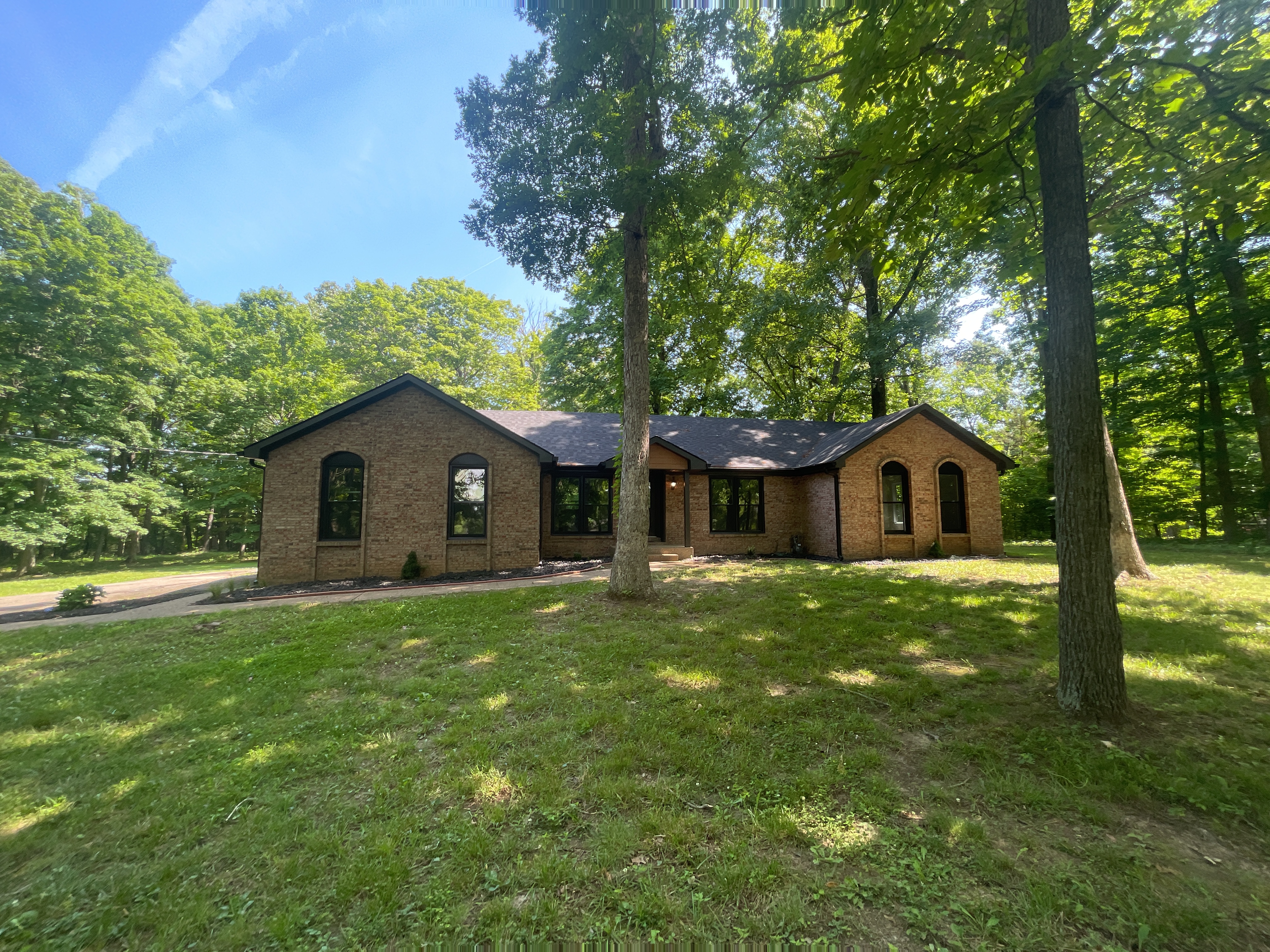
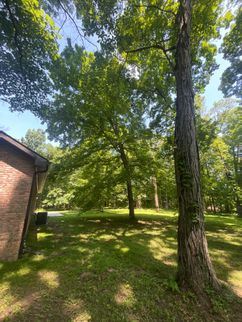
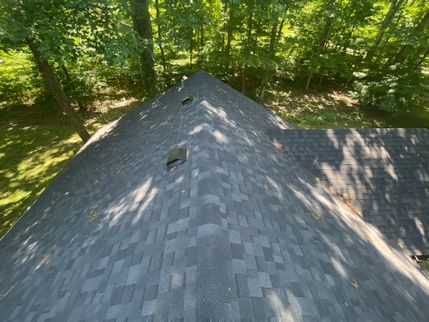
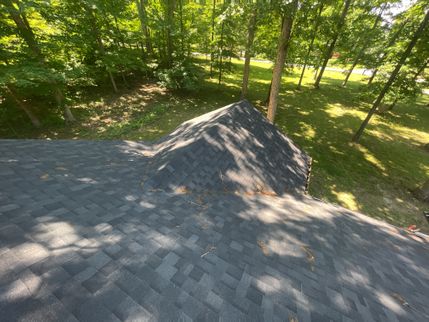
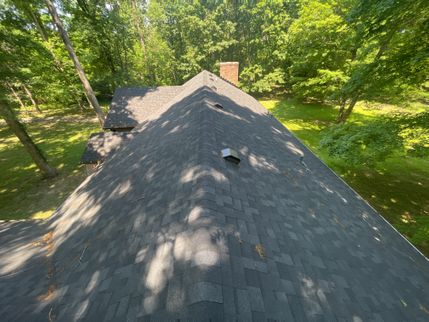
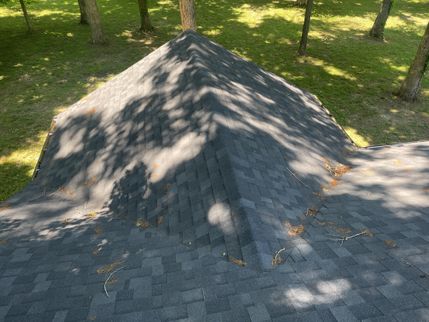

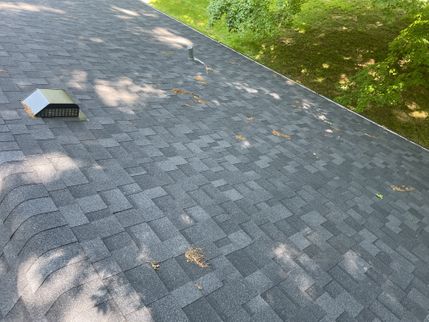

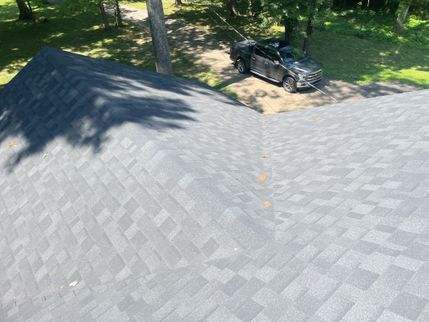
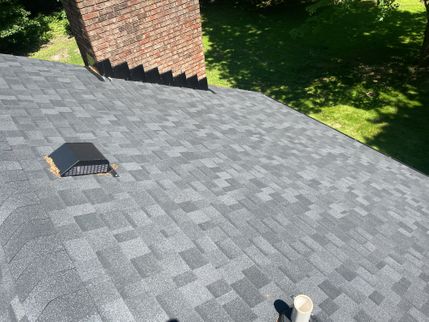
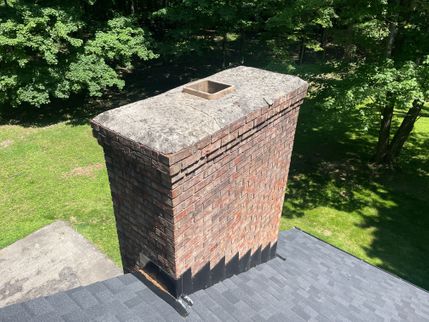

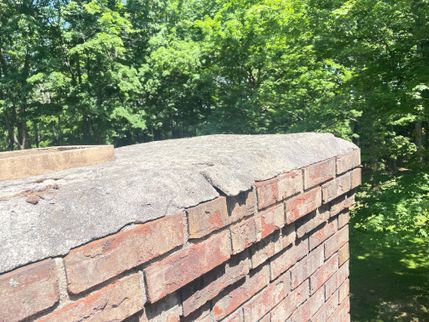



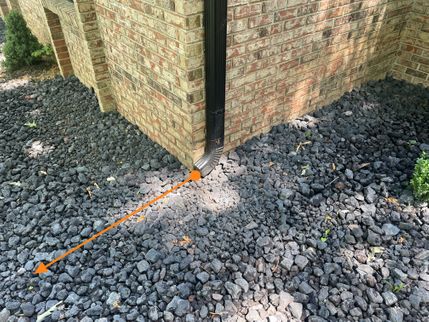

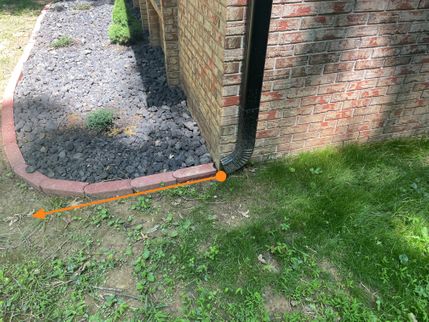
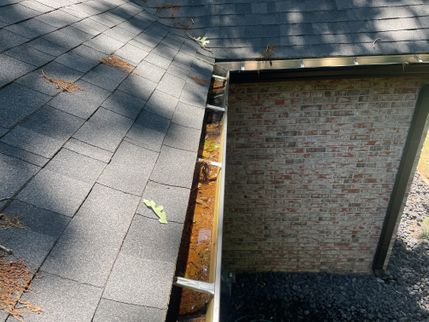

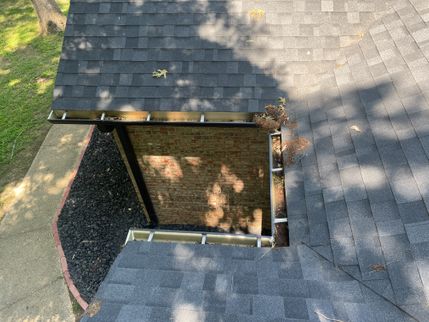
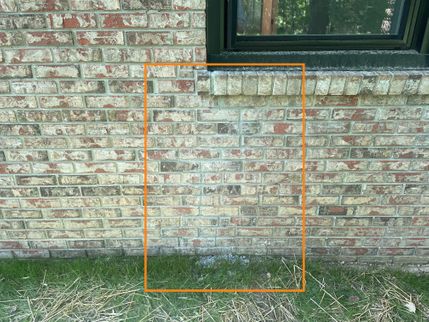
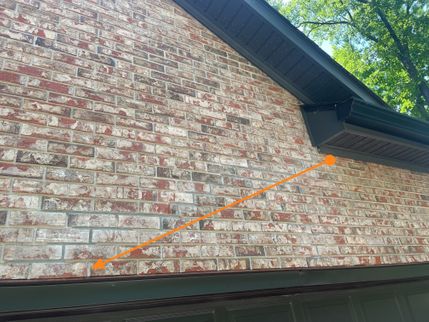
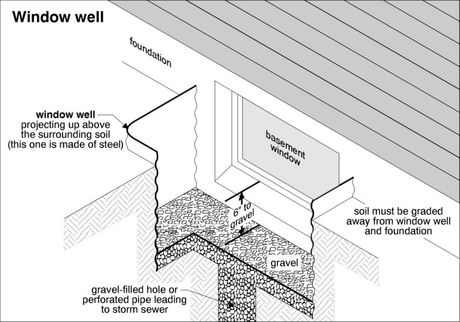
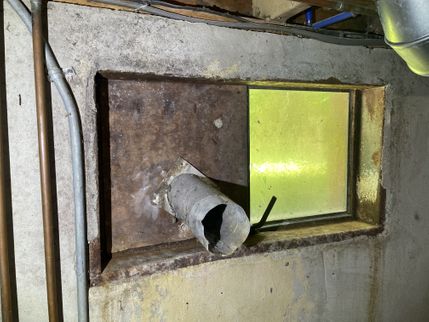

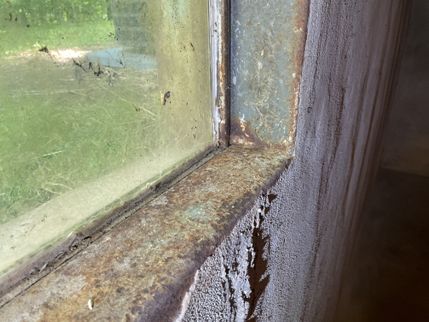
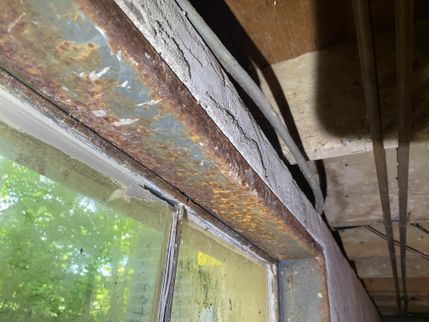

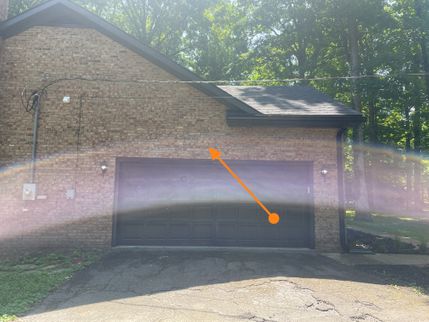
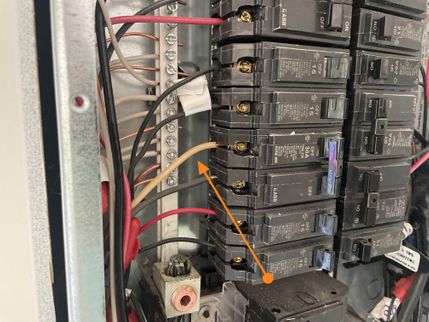
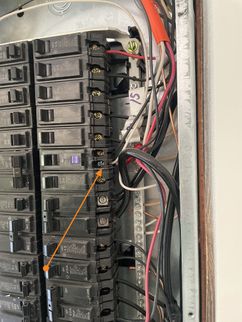
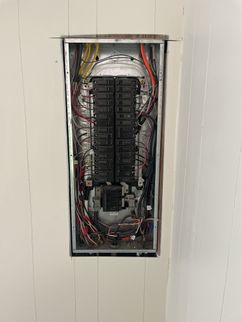

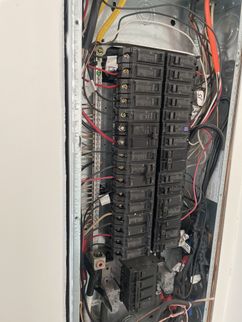



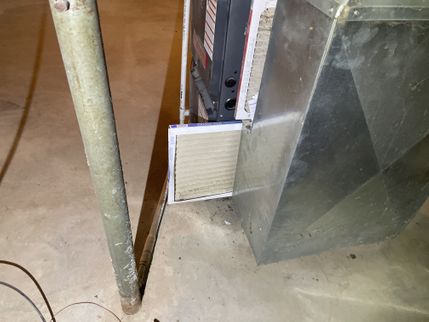

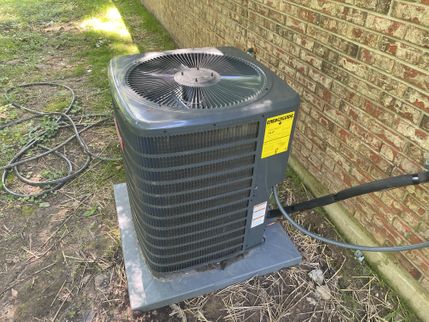
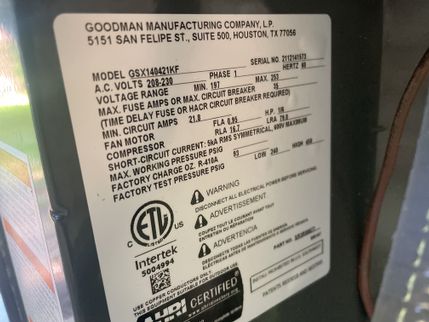
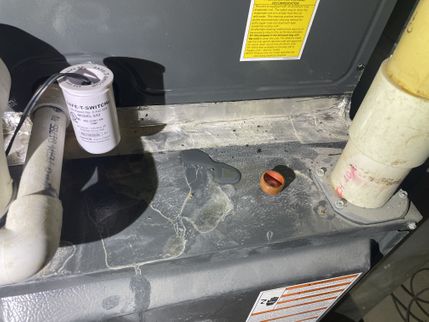
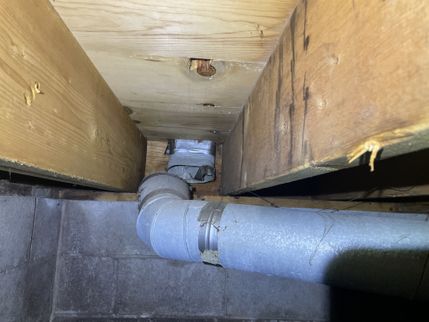
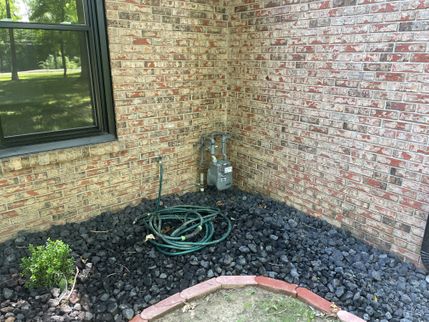
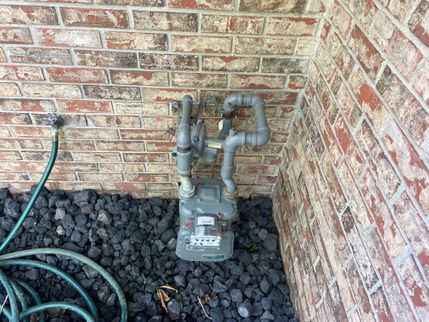
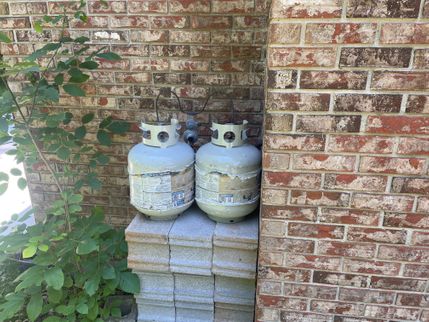


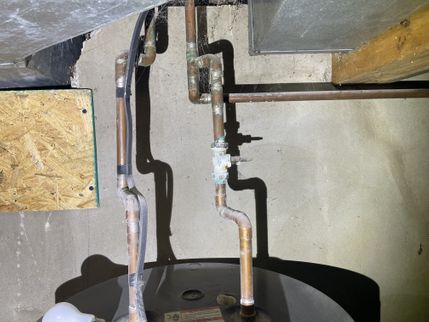
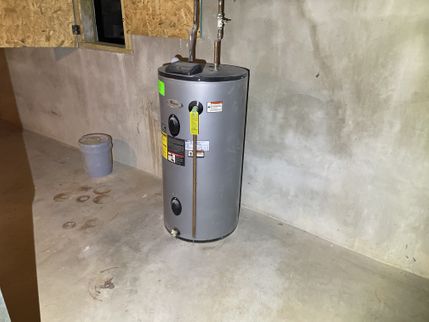

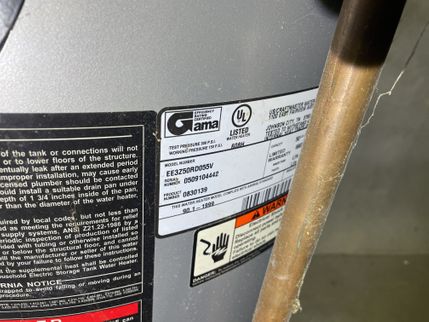
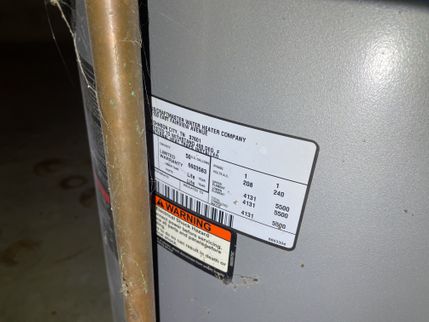
 (1).jpg)
